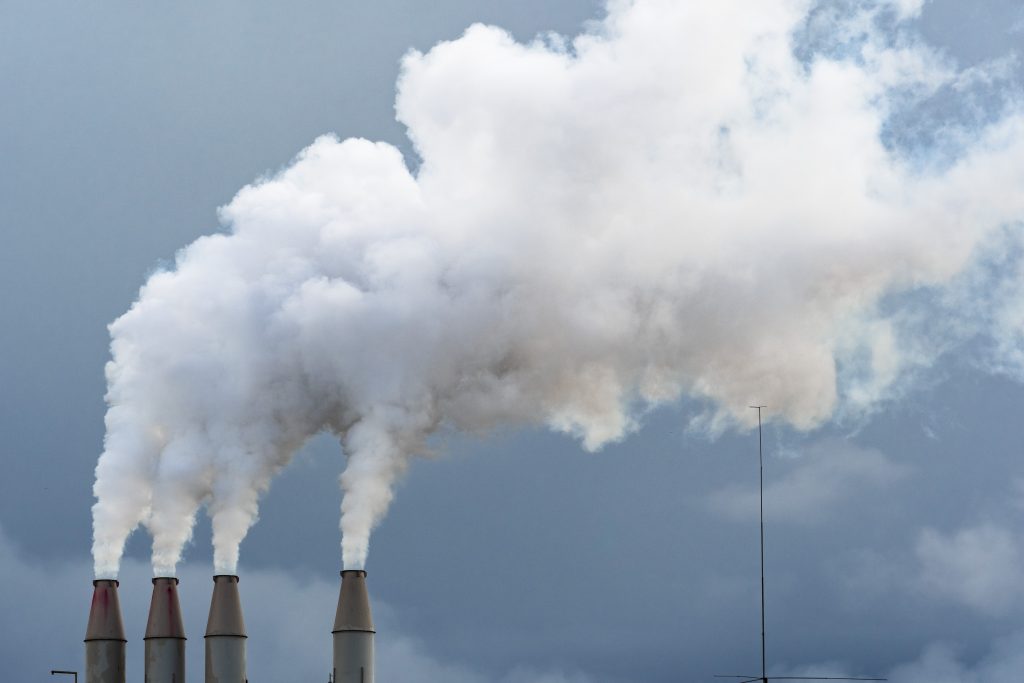What’s Causing Climate Change

Greenhouse gases (GHGs) and the greenhouse effect are, in general, the causes of climate change. A greenhouse gas is simply a gas that traps heat in the atmosphere. The greenhouse effect is what happens when the greenhouse gases in Earth’s atmosphere trap the Sun’s heat. Greenhouse gases and the greenhouse effect are necessary to make the Earth a livable planet. Without them, the temperature of Earth’s surface would be about 59oF (33oC) colder – brrr!
While climate change has been occurring naturally since the beginning of time, the abundance of greenhouse gases in the atmosphere caused by human activity is the major driver of today’s rapid rate of climate change. The burning of fossil fuels (coal, oil, & gas) that we use every day for energy production, transportation, and a number of other applications are the most common way greenhouse gases are added to the atmosphere. Gases such as carbon dioxide, methane, and water vapor all lead to the greenhouse gas effect, warming the surface of the planet. What are the most common greenhouse gases, where do they come from, and which are most harmful?
- Carbon dioxide (CO2): Most greenhouse gas emissions in the US come from carbon dioxide. It not only enters the atmosphere through the burning of fossil fuels, but also when solid wastes, trees, and other biological materials are burned. CO2 may also enter the atmosphere during chemical reactions that are used in manufacturing processes. On a slightly more positive note, carbon dioxide can be sequestered, or removed, from the atmosphere when it is absorbed by trees and plants.
- Methane (CH4): Methane emissions come from a variety of sources. Agriculture, energy and industry, and home and business waste are the most common sources. In agriculture, methane is produced as a part of the natural digestive processes of livestock. Methane can be found in all applications of natural gas – production, processing, storage, transmission, and distribution. Crude oil (petroleum) emissions come from its production, refinement, transportation, and storage. Waste from businesses and homes that ends up in landfills is the third-largest contributor of methane emissions in the US. In addition to all of these sources, methane is produced during the decomposition of organic materials, most notably from wetlands.
- Nitrous oxide (N2O): The nitrogen cycle is responsible for naturally occurring emissions of nitrous oxide, especially emissions resulting from the bacterial breakdown of nitrogen in the soil and ocean. The vast majority of N2O emissions, however, come from agricultural practices, mainly the use of fertilizers, both synthetic and organic. Emissions can also be produced during the nitrification and denitrification of wastewater, burning of fuels and combustion, and as a byproduct in the making of synthetic fertilizers and fibers such as nylon.
- Fluorinated gases: Synthetic gases released during industrial and manufacturing processes are known as fluorinated gases. Included in this category are hydrofluorocarbons (HFCs), perfluorocarbons (PFCs), sulfur hexafluoride (SF6), and nitrogen trifluoride (NF3). Fluorinated gases carry very high global warming potentials (GWPs), meaning it takes very little of these gases to have proportionally larger effects on temperature compared to other greenhouse gases. Fluorinated gases, especially hydrofluorocarbons, are being used to replace chlorofluorocarbons (CFCs) and hydrochlorofluorocarbons (HCFCs) as refrigerants and propellants, for example, because hydrofluorocarbons don’t cause depletion of the stratospheric ozone layer. Sulfur hexafluoride, used in the insulation of electrical transmission equipment, is the most potent greenhouse gas. It has the largest global warming potential of any greenhouse gas analyzed by the Intergovernmental Panel on Climate Change.
- Water Vapor: Water vapor is the most abundant greenhouse gas on Earth and results in over 50% of the greenhouse warming effects. How? An increase in the Earth’s temperature causes more evaporation. More evaporation means more water vapor in the atmosphere because warmer air holds more moisture.